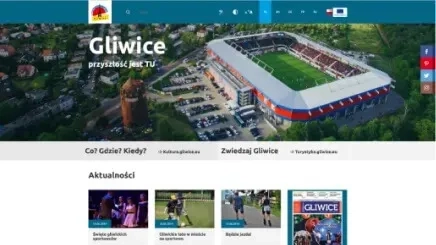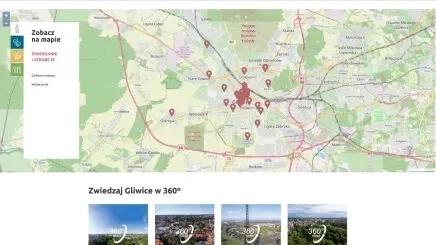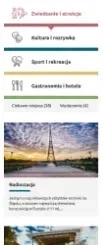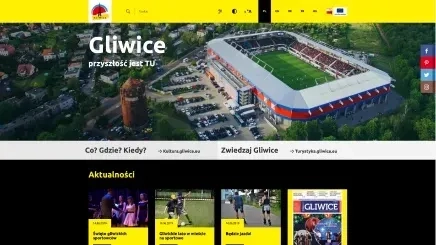
A new website project for the City of Gliwice
Project type
New website
Industry
Municipal Office
Technologies
Scope of work
Web development, graphic design

The Problem
- Non-responsive website
- Obsolete back-end
- Problems with updates, causing errors in rendering
- Outdated graphic design
About the Client
Gliwice is one of the oldest cities in Upper Silesia that connects a rich history with modernity. The city offers various recreational areas and green spaces. Moreover, it organizes many cultural and music events. Due to its industrial heritage, it is considered a center of innovation and technological advancement.
The Challenge
The lack of responsiveness negatively affected the user experience. Before implementing the new website, the users who visited the Municipal Website via mobile phones were confronted with the view of a website intended for desktop computers. The desktop version is designed to be operated with a mouse, hence the number of small elements. Although phones have the same or similar resolution to computer screens, the interface had to be “simplified” and adapted to mobile phones.
Changing the outdated graphic design was also necessary. The city’s website is its virtual showcase, so it should contain the most important information for residents, tourists, and investors. Considering the old layout of the website, we knew that a simple graphic design upgrade would not be sufficient.
The Goal
The most important project’s assumption was adjusting the website to RWD (Responsive Web Design) principles. Thanks to that, the users can take advantage of all the website functions regardless of the device. Our goal was also to implement a completely new graphic design.
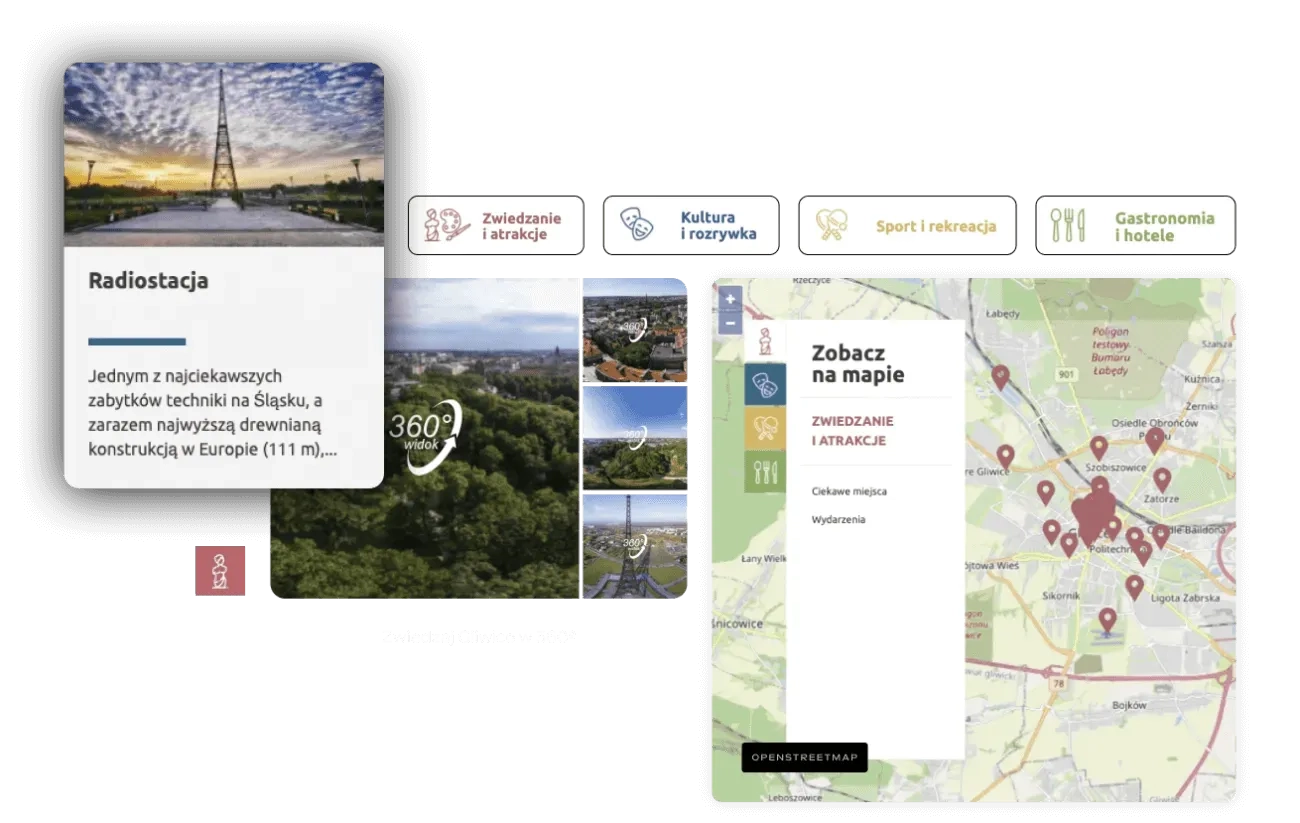

The Solution
The back-end does not end with the CMS platform but also includes the servers and technologies on which the system operates. Since the new city portal was based on the Drupal 8 technology, we adapted this system to:
- the latest PHP version,
- MySQL database,
- Apache HTTP server.
Solution Details

Responsive Graphic Design
The Municipal Information Service required fundamental changes – and that is exactly what we did. We started with designing and implementing a new layout and a responsive version, as a direct solution to the mobile device users' problem. From now:
- every user, regardless of the device, gets a perfectly adjusted website,
- the website is responsive meaning that the content and images always look right and adjust to the display’s size.
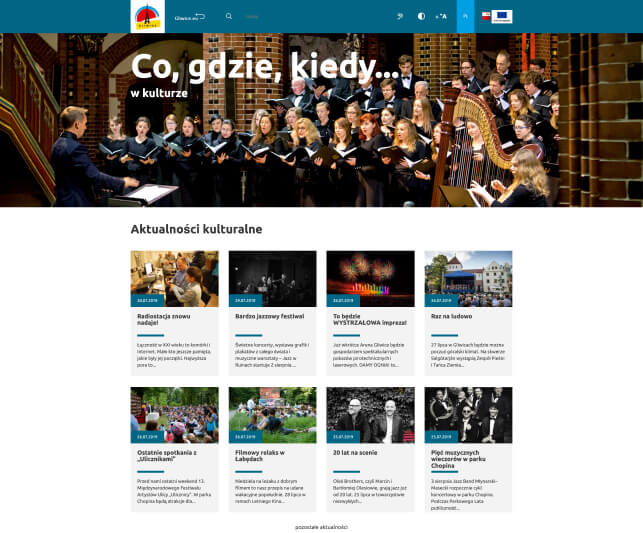
Building Subservices
We expanded the portal with two new subpages:
- Culture
- Tourism
Based on the assumption that different teams would edit each website and subsite, we created a solution that enabled managing all projects from one panel. As a result, it unified the UI, allowing better interface understanding and less training sessions for editors.
Moreover, all types of technical support is provided on the same interface. In addition, managing access to particular functions is also easier due to the central access management point. It replaces individual instances and the complicated process of granting permissions to each website separately.
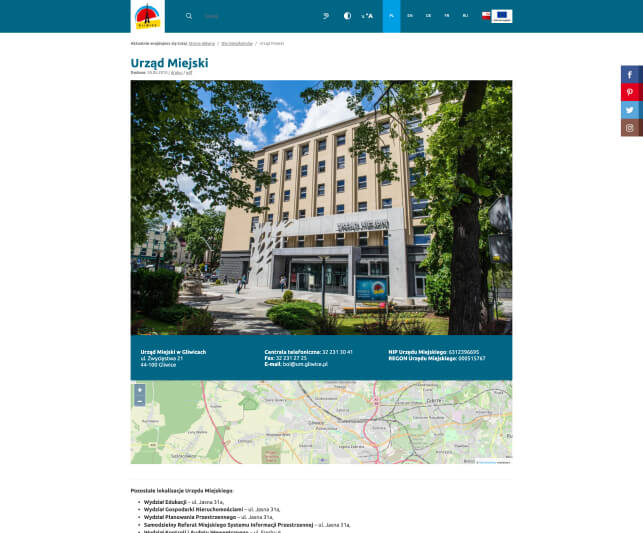
Integration with PIB
In addition to changes in the back-end, we integrated the new portal with PIB – the Public Information Bulletin. In this case, the integration included automatic data and information download from PIB and displaying them on the website.

WCAG Implementation
We adapted the new website to WCAG 2.0 and W3C standards – this means supporting a high contrast and font enlargement, which is crucial for people with visual impairments.
The Effects
We built a new, graphically consistent, and responsive showcase for Gliwice
When the project’s goal is to completely rebuild the website, back-end changes might not be enough. It took us a lot of time and faced many challenges but it was worth it! Here are the effects of our work:

Designing and implementing a new layout and graphic design along with the responsive version.
Two new sections: Culture and Tourism.
Managing the main website and subsites from one panel.
Google Maps and OpenStreetMap integrations for visualizing data pulled from a Drupal instance.
Public Information Bulletin integration.
Expanded events calendar.
Online polls.
WCAG 2.0 & W3C compliance (high contrast and large fonts).
Updating Drupal to support PHP 7.2, MySQL 5.7, and Apache 2.4.
Implementing 360-degree panoramic views.
Statistics
5
~ 600
5
3
Intuitive municipal project
Entrust it to Smartbees specialists
